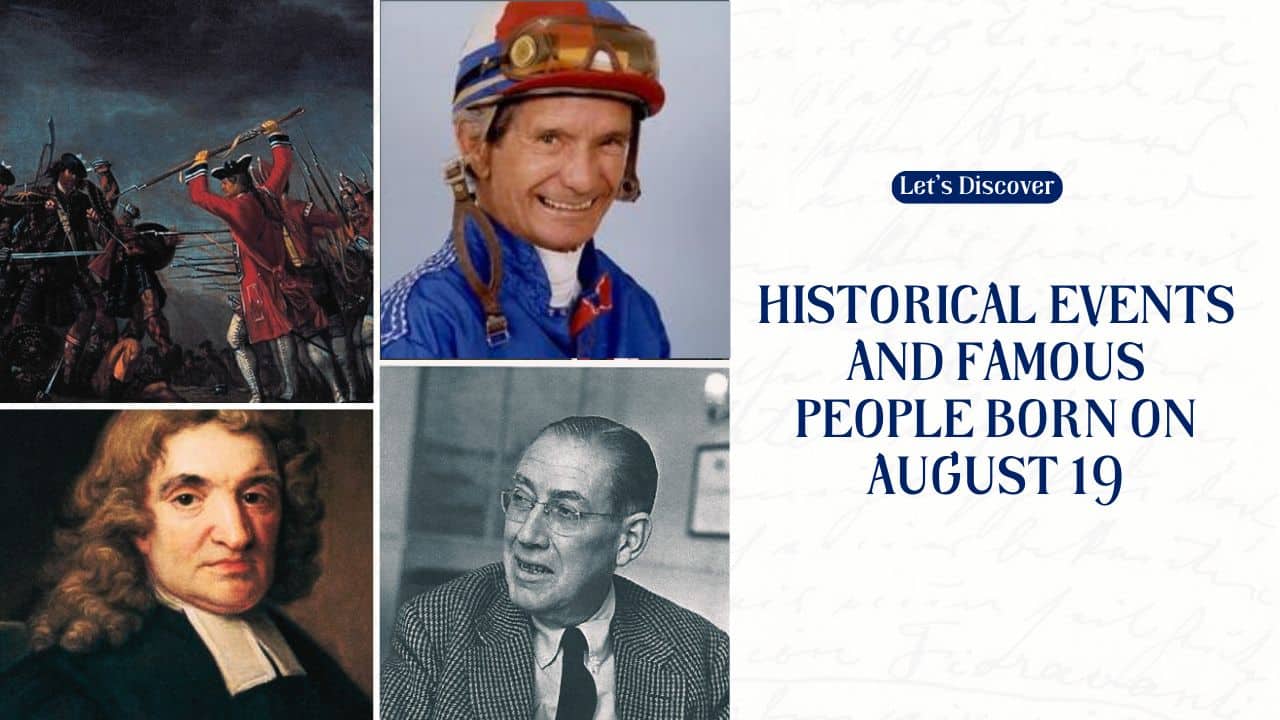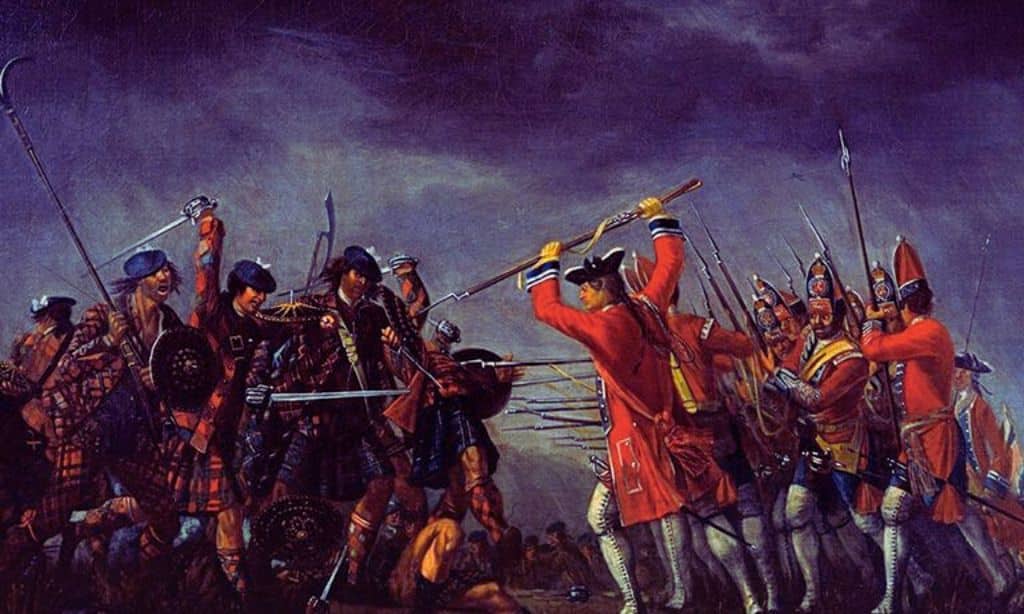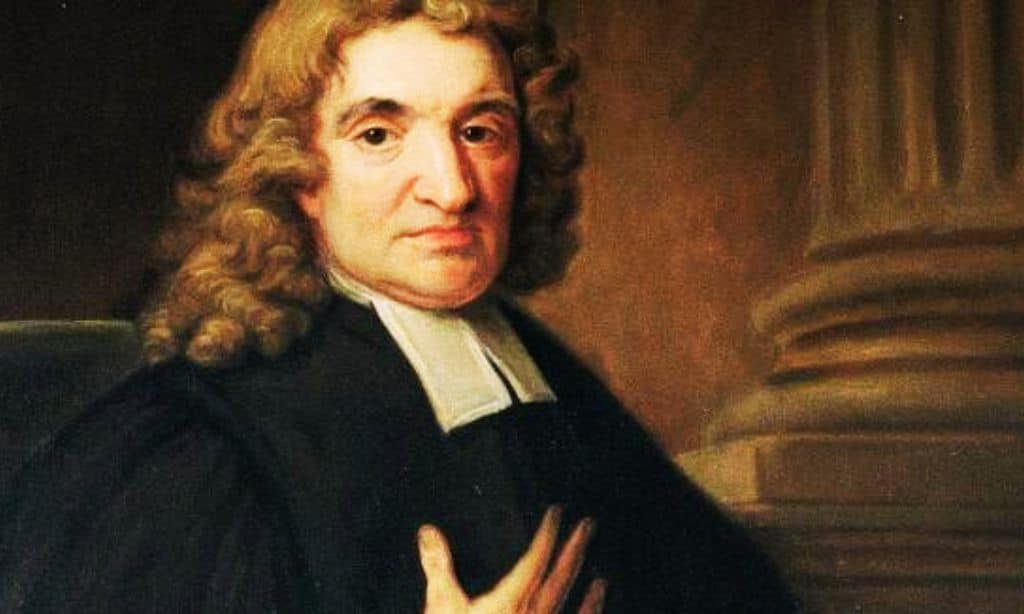August 19 is a day full of important events and birthdays. This article will take you on a journey through time, exploring five big events that happened on this day. We’ll also learn about five famous people born on August 19. From wars to inventions, and from scientists to sports stars, this date has seen it all. Let’s dive in and discover why August 19 is such a special day in history.
Historical Events on August 19
A. Dutch Take Fort Groenlo (1627)
Long ago, in 1627, something important happened in a place called Fort Groenlo. This was during a time when the Dutch people were fighting against Spain. They wanted to be free and rule themselves.
Prince Frederick Henry, who was leading the Dutch, attacked Fort Groenlo. The fort was very strong, but the Prince and his army were smart and brave. After a long fight, they finally won and took over the fort.
This victory was a big deal for the Dutch. It showed that they were getting stronger and could beat the Spanish army. It gave the Dutch people hope that they could win their freedom. This battle was just one of many in their long fight, but it helped them get closer to their goal of being independent.
B. Jacobite Rising (1745)
In 1745, a young man named Charles Edward Stuart, also known as “Bonnie Prince Charlie,” did something brave and risky. He went to a place called Glenfinnan in Scotland and raised a special flag. This was the start of what we call the Jacobite Rising.
The Jacobites were people who wanted to put Bonnie Prince Charlie’s family back on the throne of Britain. They thought his family should be the rulers, not the people who were in charge at the time.
When Bonnie Prince Charlie raised his flag, it was like a signal. Many Scottish people joined him, ready to fight. This was the beginning of a big rebellion. It was exciting for some people, but scary for others.
This rebellion changed a lot of things in Scotland and England. Even though it didn’t work out the way Bonnie Prince Charlie hoped, it’s still remembered as an important part of Scottish history. People still talk about it and write songs about it today.
C. Daguerreotype Photographic Process (1839)
On August 19, 1839, something amazing happened in the world of pictures. A man named Louis Daguerre showed everyone a new way to make photos. It was called the daguerreotype process.
Before this, if you wanted a picture of someone, you had to paint it. But Daguerre’s invention let people make real-life images using light and special chemicals. It was like magic!
The French government thought this was so important that they decided to share it with everyone for free. They announced it in Paris and said it was a gift to the world.
This was a big deal because it changed how we could remember things. Now, people could take pictures of their families, important events, and beautiful places. It was the start of photography as we know it today.
The daguerreotype process wasn’t easy to use, but it was a huge step forward. It led to more inventions that made taking pictures easier and better. Without Daguerre’s work, we might not have the cameras and smartphones we use for photos today.
D. US President Urges Neutrality (1914)
In 1914, a big war started in Europe. It was called World War I, and it involved many countries fighting each other. The United States wasn’t part of the war yet, and President Woodrow Wilson wanted to keep it that way.
On August 19, 1914, President Wilson did something important. He sent a message to the Senate, which is a group of people who help make laws in America. In this message, he asked all Americans to stay neutral.
Being neutral means not taking sides in a fight. President Wilson wanted Americans to be neutral “in fact as well as name.” This meant not just saying they were neutral, but really acting like it too.
This was a big decision. Many Americans had family or friends in Europe, and they wanted to help. But President Wilson thought it was best for the country to stay out of the war for now.
This message showed how America was trying to be careful in a dangerous time. It was part of a bigger plan to keep America safe and avoid getting involved in the war. Even though America did join the war later, in 1917, this moment in 1914 was very important in showing how America was thinking about the war at first.
E. WINS Radio’s Stand Against White Cover Versions (1955)
On August 19, 1955, a radio station in New York City called WINS did something bold. They said they wouldn’t play “copy” versions of R&B (Rhythm and Blues) songs by white artists anymore.
Back then, it was common for white singers to make their own versions of songs that black R&B artists had already recorded. These were called “cover” versions. Many radio stations played these cover versions instead of the original R&B songs.
WINS decided to change this. They said they would play the original version of “Ain’t That A Shame” by Fats Domino, who was black, instead of the cover by Pat Boone, who was white.
This was a big deal because it showed support for the original R&B artists. It helped more people hear the real versions of these songs. This decision by WINS was part of a bigger change happening in music and society.
By playing the original R&B songs, WINS helped these artists become more popular. It also helped different kinds of music mix together more. This was important for the future of rock and roll music, which borrowed a lot from R&B.
Famous Birthdays on August 19
A. John Flamsteed (1646-1719)
John Flamsteed was an important English astronomer. He was born on August 19, 1646, in Denby, England. Flamsteed loved looking at the stars and studying space. He was so good at it that he became the first Astronomer Royal of England.
Here’s a quick look at John Flamsteed’s life:
| Fact | Information |
|---|---|
| Born | August 19, 1646 |
| Died | December 31, 1719 |
| Birthplace | Denby, England |
| Job | Astronomer |
| Famous for | Being the first Astronomer Royal |
| Big Achievement | Created a star catalog and celestial atlas |
Flamsteed did a lot of important work. He made careful maps of the stars and planets. His big project was a book called the “British Catalogue,” which listed over 3,000 stars. This book helped other astronomers for many years.
Even though he didn’t have the best tools, Flamsteed worked hard to make very accurate measurements. His work helped make astronomy more exact and scientific. Today, we remember him as one of the most important astronomers in history.
B. Charles E. Hires (1851-1937)
Charles E. Hires was an American businessman born on August 19, 1851. He started as a pharmacist but became famous for inventing a popular drink: Hires Root Beer.
Here’s a quick look at Charles E. Hires’ life:
| Fact | Information |
|---|---|
| Born | August 19, 1851 |
| Died | July 31, 1937 |
| Birthplace | Elsinboro, New Jersey |
| Job | Pharmacist and Businessman |
| Famous for | Inventing Hires Root Beer |
| Big Achievement | Made root beer a popular drink in America |
Hires created his root beer in 1875. At first, he sold it as a powder that people could mix with water at home. Later, he started selling it already mixed in bottles.
Hires Root Beer became very popular. Charles Hires was good at advertising, and he helped make root beer famous all over America. His company grew big and successful.
Even though root beer had been around before, Hires made it into a business. He showed that a simple idea, like a tasty drink, could become a big success if you work hard and are smart about selling it.
C. Ogden Nash (1902-1971)
Ogden Nash was an American poet born on August 19, 1902. He was famous for writing funny poems that made people laugh.
Here’s a quick look at Ogden Nash’s life:
| Fact | Information |
|---|---|
| Born | August 19, 1902 |
| Died | May 19, 1971 |
| Birthplace | Rye, New York |
| Job | Poet |
| Famous for | Writing humorous poetry |
| Big Achievement | Wrote over 500 pieces of comic verse |
Nash’s poems were short and clever. He often played with words and made up new ones to make his poems funny. One of his famous books was called “I’m a Stranger Here Myself.”
People loved Nash’s poems because they were easy to understand and made them smile. He wrote about everyday things like animals, family life, and sports in a way that was both silly and smart.
Nash’s work showed that poetry doesn’t always have to be serious. He helped make poetry fun and accessible to many people. Even today, people still enjoy reading his funny verses.
D. Malcolm Forbes (1919-1990)
Malcolm Forbes was an American businessman born on August 19, 1919. He was famous for running Forbes magazine, which writes about business and rich people.
Here’s a quick look at Malcolm Forbes’ life:
| Fact | Information |
|---|---|
| Born | August 19, 1919 |
| Died | February 24, 1990 |
| Birthplace | Brooklyn, New York |
| Job | Publisher and Businessman |
| Famous for | Running Forbes magazine |
| Big Achievement | Made Forbes a leading business magazine |
Malcolm’s father started Forbes magazine, but Malcolm made it much bigger and more famous. He was known for living an exciting life, with hobbies like riding motorcycles and flying hot air balloons.
Forbes was good at getting attention for his magazine. He threw big parties and made lists of the richest people in the world. This made people want to read Forbes magazine.
Under Malcolm’s leadership, Forbes became one of the most important business magazines in the world. He showed that running a business could be exciting and fun, not just serious work.
E. Bill Shoemaker (1931-2003)
Bill Shoemaker was an American jockey born on August 19, 1931. A jockey is someone who rides horses in races. Shoemaker was one of the best jockeys ever.
Here’s a quick look at Bill Shoemaker’s life:
| Fact | Information |
|---|---|
| Born | August 19, 1931 |
| Died | October 12, 2003 |
| Birthplace | Fabens, Texas |
| Job | Jockey |
| Famous for | Winning many horse races |
| Big Achievement | Won 8,833 races in his career |
Shoemaker was very small, which made him perfect for being a jockey. He started racing when he was very young and quickly became one of the best.
During his long career, Shoemaker won many important races. He won the Kentucky Derby, one of the biggest horse races, four times. His last Kentucky Derby win was in 1986 when he was 54 years old!
Bill Shoemaker showed that being small didn’t mean you couldn’t do big things. He was respected by everyone in horse racing and is remembered as one of the greatest jockeys in history.
Takeaway
August 19 is a day filled with important events and remarkable people. From the Dutch taking Fort Groenlo to WINS radio’s stand against white cover versions, we’ve seen how this day has shaped history in different ways. We’ve also met five extraordinary individuals born on this day, each leaving their mark on the world in their own unique way.
These events and people show us how diverse and exciting history can be. Whether it’s through war, invention, art, business, or sports, August 19 has given us stories of people changing the world around them. As we remember these events and celebrate these birthdays, we can see how each day in history is full of moments that shape our world.
References:
1. “The Eighty Years’ War and the Golden Age of Dutch Art.” The Metropolitan Museum of Art.
2. “The Jacobite Rising of 1745.” National Museums Scotland.
3. Newhall, Beaumont. “The History of Photography.” The Museum of Modern Art, New York.
4. “Woodrow Wilson: Foreign Affairs.” Miller Center, University of Virginia.
5. Ward, Brian. “Just My Soul Responding: Rhythm and Blues, Black Consciousness, and Race Relations.” University of California Press.
6. Baily, Francis. “An Account of the Revd. John Flamsteed.” London, 1835.
7. Funderburg, Anne Cooper. “Sundae Best: A History of Soda Fountains.” University of Wisconsin Press.
8. Parker, Douglas M. “Ogden Nash: The Life and Work of America’s Laureate of Light Verse.” Ivan R. Dee Publisher.
9. Forbes, Malcolm S. “More Than I Dreamed: A Lifetime of Collecting.” Simon & Schuster.
10. Shoemaker, Bill. “Shoemaker: America’s Greatest Jockey.” Doubleday.









































